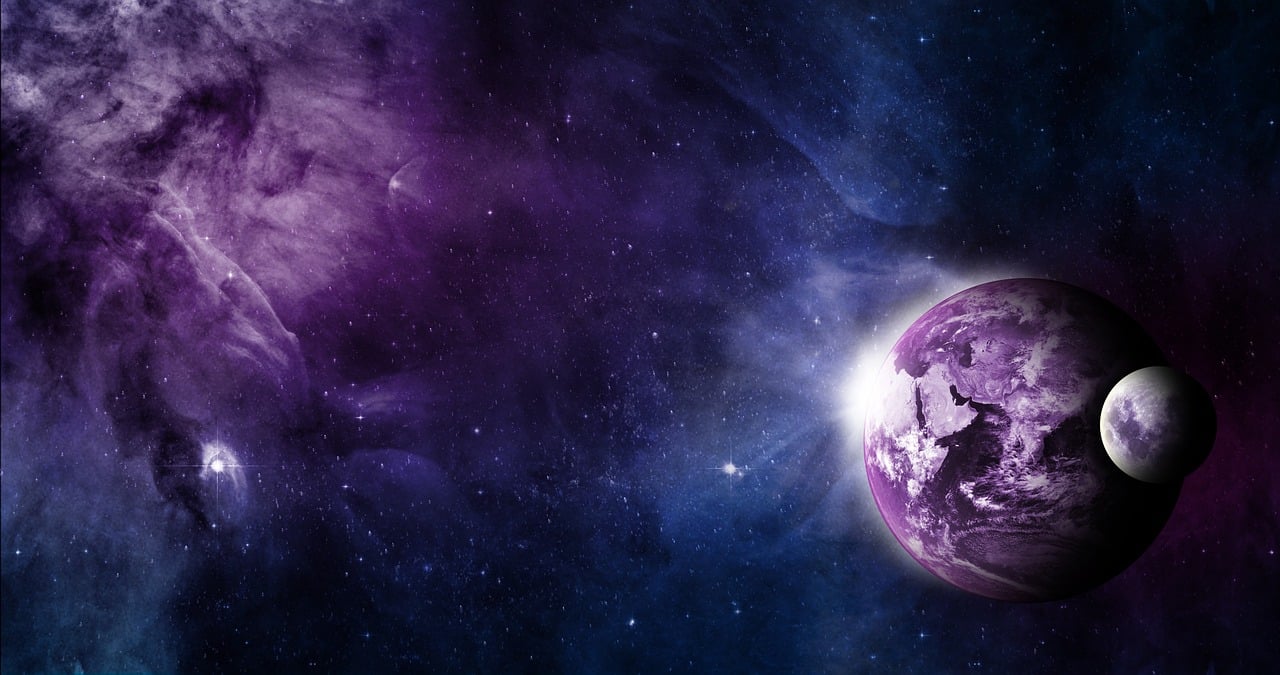It’s no secret many scientists believe life on Earth came from space. The elements which are essential for life, like carbon and nitrogen, are believed to have come from another object which had a close encounter with Earth. Scientists now believe Earth’s collision with another planet caused our moon to be formed and brought the building blocks of life to Earth.
A new study suggests the planetary collision believed to have brought carbon, nitrogen and the other necessary elements occurred more than 4.4 billion years ago. The study was conducted by Rice University petrologists, who published their results in the journal Science Advances.
“From the study of primitive meteorites, scientists have long known that Earth and other rocky planets in the inner solar system are volatile-depleted,” study co-author Rajdeep Dasgupta said in a statement. “But the timing and mechanism of volatile delivery has been hotly debated. Ours is the first scenario that can explain the timing and delivery in a way that is consistent with all of the geochemical evidence.”
Dasgupta’s team conducted several high-temperature and high-pressure experiments in a lab equipped for studying geochemical reactions which take place deep in the planet’s crust.
“The core doesn’t interact with the rest of Earth, but everything above it, the mantle, the crust, the hydrosphere and the atmosphere, are all connected,” study lead author and graduate student Damanveer Grewal said. “Material cycles between them.”
Previous theories suggested that Earth received the building blocks of life from material-rich meteorites which brought them from the outer solar system soon after Earth’s core formed. Scientists say even though the isotopic signatures of Earth’s volatiles suggest this theory is correct, there’s not enough carbon and nitrogen to match the theory 100%. Earth’s non-core material is 40 parts carbon for every one part nitrogen, which is about two times the 20-1 ratio.
With this knowledge, other estimated ratios and the concentrations of other elements on Earth and other large celestial bodies, Dasgupta, Grewal and Rice postdoctoral researcher Chenguang Sun created a computer simulation which shows one potential scenario showing how Earth’s volatiles may have been produced. They now suggest that Earth’s collision with another planet could be responsible for the material transfer.
“What we found is that all the evidence—isotopic signatures, the carbon-nitrogen ratio and the overall amounts of carbon, nitrogen and sulfur in the bulk silicate Earth—are consistent with a moon-forming impact involving a volatile-bearing, Mars-sized planet with a sulfur-rich core,” Grewal said.
“This study suggests that a rocky, Earth-like planet gets more chances to acquire life-essential elements if it forms and grows from giant impacts with planets that have sampled different building blocks, perhaps from different parts of a protoplanetary disk,” Dasgupta added.
He also stated that it’s unlikely Earth’s bulk silicate received life-essential materials on its own to create its biosphere, atmosphere and hydrosphere, adding that it “means we can broaden our search for pathways that lead to volatile elements coming together on a planet to support life as we know it.”
They believe Earth’s collision with another planet led not only to the formation of Earth’s only moon, but also helped form the shape of the life-rich Earth that we know today.





